How To Cite A Blog In Various Styles Using Correct Citations
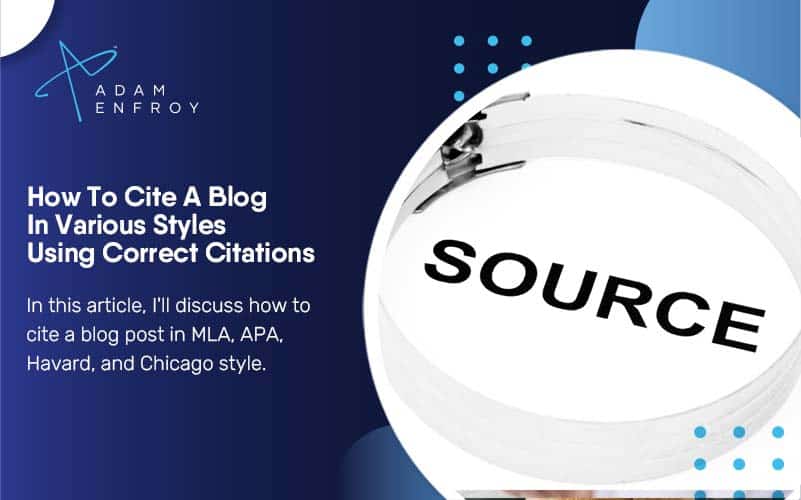
Ah, the sweet panic of mixing up APA and MLA styles, the classic muddle between the author’s first and last name placement, and, let’s not even get started on the date format conundrum.
We’ve all been there, getting tossed into the chaotic sea of citation styles, clinging onto the auto-citation websites that may or may not steer you right.
However, I bet you never thought citation mishaps could potentially spark a sneaky plagiarism issue in your top-tier content, did you?
Well, surprise!
Like that extra slice of cheesecake you swore wouldn’t affect your diet, mismanaged citations can sneak up on your digital marketing strategies, side hustles, blogging efforts, and other savvy online endeavors.
In this article, I’ll discuss how to cite a blog post in MLA, APA, Havard, and Chicago style, helping you ensure all your citations are up to scratch while elevating the quality of your content.
- What Is A Blog Citation?
- Various Citation Formats
- Discovering Reference Examples For Your Blog Posts
- Assessing The Credibility Of A Piece Of Content
- Understanding Plagiarism And Its Consequences
- The Importance Of Paraphrasing In Academic Writing
- Using Citation Tools And Software
- Citations For Different Types Of Sources
- Wrap Up.
What Is A Blog Citation?
A citation acknowledges the source you have used in your research.
It consists of a brief reference to the source, usually including the author’s name, title, and publication date.
Citing sources correctly helps build credibility for your work by demonstrating where the information or ideas originated.
Various Citation Formats
Knowing the difference between citation formats is important for a successful academic career. Here are four major citation formats:
APA Style
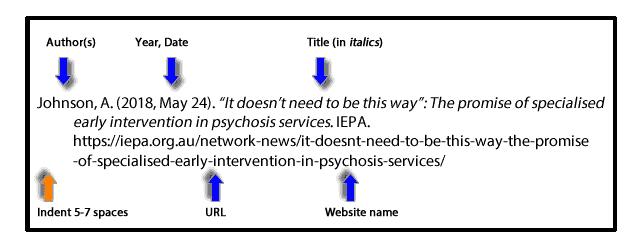
Image credit: https://libraryguides.vu.edu.au/
When citing an academic blog post in APA format, it is important to follow a specific format.
First, list the author’s name in the format Last Name, First Initial.
Next, enclose the year of publication in parentheses.
Then, include the title of the blog post in sentence case, followed by the blog’s name in italics.”
Make sure to capitalize the first letter of the first word of the blog name.
Finally, add a link to the post.
For example, a correct APA citation for an academic blog post might look like this:
Doe, J. (2020). The importance of academic blogs. [Blog Post]. Academic Bloggers. Retrieved from https://www.academicbloggers.com/importance-of-academic-blogs/.
Chicago Style
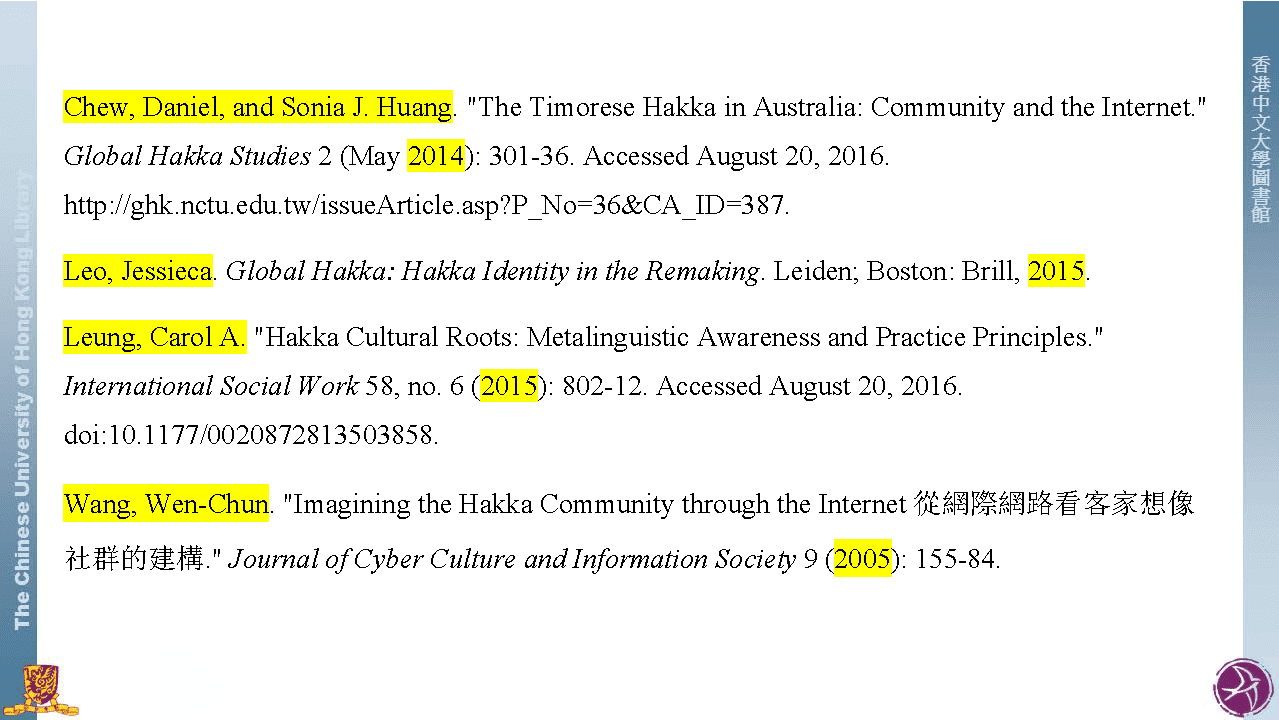
Image credit: https://libguides.lib.cuhk.edu.hk
Citing academic blog posts in Chicago style follows a similar format to APA but with a few variations.
First, list the author’s name in the First Name, Last Name format.
Next, place the post’s title in quotation marks and the blog’s name in italics.
Additionally, state the medium of the post (such as a blog) in brackets.
Finally, add the link to the post at the end.
So, a Chicago-style citation for an academic blog post might look like this:
Doe, John. “The Importance of Academic Blogs. “Academic Bloggers, [blog], June 1, 2020, https://www.academicbloggers.com/importance-of-academic-blogs/.
Harvard Style
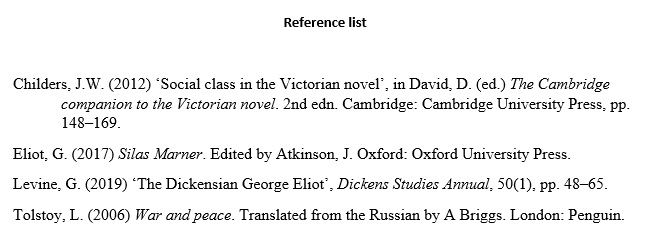
Image credit: https://www.scribbr.co.uk/
Citing academic blog posts in Harvard referencing style is similar to the APA style.
First, list the author’s name in the Last Name, First Initial format.
Next, include the year of publication in parentheses, followed by the post’s title in sentence case.
After that, place the blog’s name in italics, with the word “Blog” or the medium of the post in parentheses.
Finally, add the link to the post at the end.
A correct Harvard citation for an academic blog post might look like this:
Doe, J. (2020). The Importance of Academic Blogs. Academic Bloggers (Blog). Retrieved from https://www.academicbloggers.com/importance-of-academic-blogs/.
MLA Style
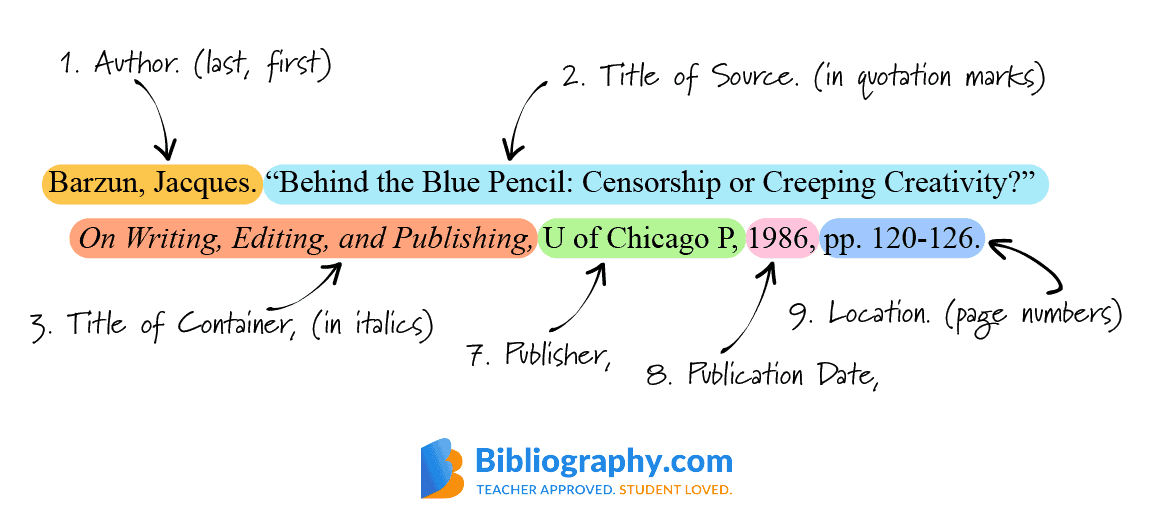
Image credit: https://www.bibliography.com/
Citing academic blog posts in MLA differs slightly from the other three styles.
List the author’s name in the Last Name, First Name format, followed by the post’s title in quotation marks.
After that, list the name of the blog in italics, the publisher (if available), the date of publication (day, month, year), and the medium of publication (such as “Web” or “Blog post”).
Finally, list the URL.
A correct MLA citation for an academic blog post might look like this:
Doe, John.” The Importance of Academic Blogs.” Academic Bloggers, 1 June 2020, Blog Post, https://www.academicbloggers.com/importance-of-academic-blogs/.
Discovering Reference Examples For Your Blog Posts
Writing a blog post is not just about making great content, but it also involves using reliable sources to support the ideas you wish to present.
You may have a great idea in mind, but without proper references, it may fall short in credibility and overall impact.
Adding proper references to your blog post ensures that your arguments are more persuasive and trustworthy and can help stir the interest of your readers.
There are plenty of online resources available to help you find reference examples that are both reliable and informative.
A great place to start would be visiting websites offering academic-quality articles, such as Science Daily or Nature.
Such websites often publish peer-reviewed studies, which can be incredibly useful to refer to and support any scientific arguments you may make.
You can also use Google Scholar to find scientific articles that relate to your topic of interest and use them for reference.
If you want to find reference examples that closely match your blog’s subject matter, it’s often best to look for blog posts other bloggers have published.
Bloggers can be incredibly useful sources of references since they tend to write conversationally – often in a tone that is easy to follow.
You can search for blogs related to your topic, and when you find a post that aligns with your argument, you can cite it in your blog.
Another useful platform is social media channels, especially Twitter and LinkedIn.
These platforms allow you to connect to other thought leaders, subject matter experts, and influencers who can provide valuable insight.
You can join groups, follow hashtags, and participate in discussions to find your topic’s latest research, ideas, and trends.
Once you have found some useful references, you must know how to cite a blog post properly.
Assessing The Credibility Of A Piece Of Content
When assessing the credibility of a piece of content, you should consider several factors.
One way to assess the credibility of a piece of content is by checking the author’s credentials and experience in the topic.
Look for their biography or the “About Me” section.
If there’s no information available, try searching for their name on LinkedIn or other professional networking sites.
It’s also helpful to see if the author has written other pieces on the same topic or if they have any relevant education or certifications.
Another way to assess the credibility of a piece of content is by researching the publisher or sponsor.
Evaluate their reputation and whether they take responsibility for the content they produce.
If it’s a website or organization you’re not familiar with, it’s best to research them through third-party sources like Wikipedia or other quality review sites.
It’ll help you determine if the site has a bias or agenda.
Verifying the source currency, including publication or update dates, and checking for reproductions with permission and proper copyright/disclaimer information is important.
Outdated information may no longer be relevant or accurate, so looking for current sources is best.
Also, make sure to check if the content is properly cited or if it’s copyrighted.
Understanding Plagiarism And Its Consequences
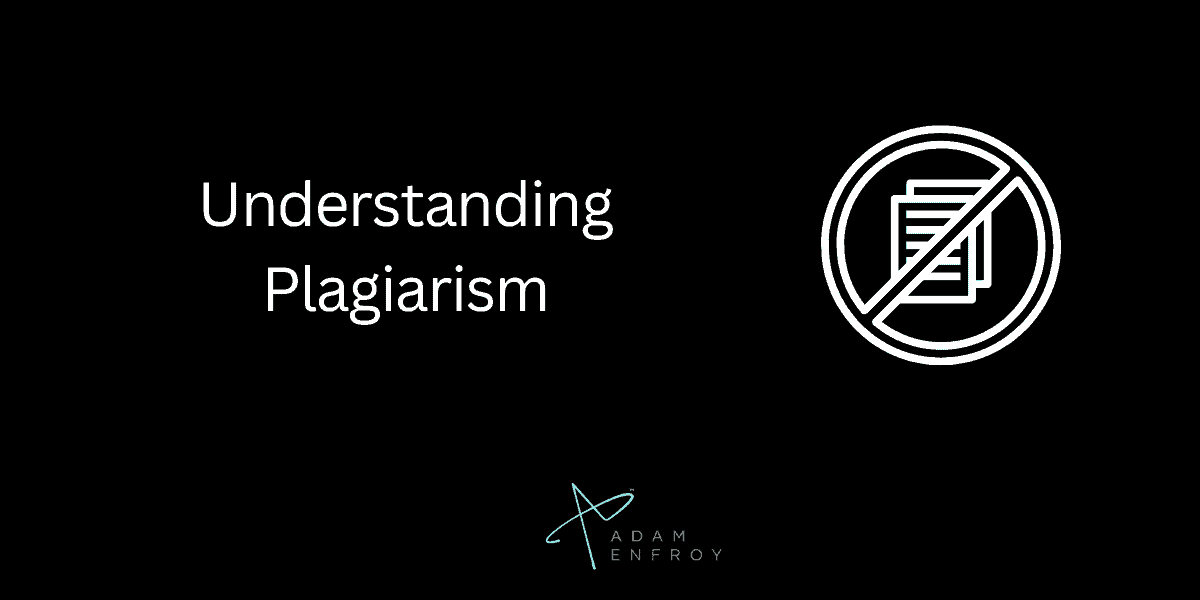
When writing papers and articles, it is important to understand the potential consequences of plagiarism.
Not only can it harm your sense of integrity, but it can also result in legal issues and damage your reputation.
To avoid these issues, here’s everything you need to know about avoiding plagiarism and citing sources properly, including how to cite a blog, is essential knowledge.
Defining Plagiarism
Plagiarism is the act of using someone else’s work without giving proper credit or permission.
It is unethical and unacceptable in academic and professional settings.
To avoid plagiarism, cite all sources properly.
Ethical Considerations
Not citing sources correctly is a breach of academic and professional ethics.
It is important to remember that giving credit where it’s due demonstrates respect for the original author and ensures readers can verify sources and information.
Even if you use AI marketing tools to automate your business, you should still attribute the original author and cite sources accurately where possible.
Legal Implications
Plagiarism may also have legal implications.
In addition to damaging your reputation, you could face copyright infringement charges.
The American Psychological Association (APA) has strict guidelines that everyone must follow to avoid potential legal issues, including proper in-text citations.
Moreover, with widely used AI content detectors that identify plagiarism, you should be extra careful to avoid it.
It’s always better to err on the side of caution and give credit where it’s due.
Ways To Avoid Plagiarism
To avoid plagiarism, take note of the sources you’ve used and keep track of where you obtained the information.
Additionally, you must follow proper citation methods per APA guidelines.
When using a blog as a source, it is important to include the author’s name, article title, blog title, date published, and URL in the proper order for in-text citation.
Understanding the consequences of plagiarism and following proper citation guidelines is critical in academic and professional settings.
By understanding everything you need to know and following ethical and legal considerations, you can avoid plagiarism and maintain your writing integrity.
The Importance Of Paraphrasing In Academic Writing
In academic writing, it is important to acknowledge sources to avoid plagiarism.
You can use various citation guides, such as APA for social sciences and MLA format for humanities.
These style guides provide specific instructions on formatting citations within the text and provide a corresponding reference list at the end of the research paper or journal article.
In-text citations can be parenthetical, meaning you should include the author’s name and publication year within the sentence or as superscript numbers corresponding to a reference list at the end of the article.
When citing a blog, it is important to follow the guidelines of the specific style guide and ensure that you paraphrase all information properly.
Do not copy and paste.
Paraphrasing involves putting the information into your own words, and you can accomplish it by changing the sentence structure, using synonyms, and summarizing.
Key differences between paraphrasing and quoting include using quotation marks around direct quotes and including the author’s name, publication year, and page number in the citation.
To paraphrase effectively, read the source multiple times, take notes on the main points, and rewrite the information without looking at the source.
Practicing paraphrasing skills and citing sources properly according to the chosen style guide can improve academic writing.
As ChatGPT (and its alternatives) become more widely used, it is important to understand the potential implications of using AI-generated content in academic writing.
Using Citation Tools And Software
Using citation tools and software can make citing blogs much easier and more efficient.
Citation generators and guides provide a template for proper citation and can ensure that the citation is accurate and follows the appropriate format, such as the 7th edition of Turabian.
Popular citation tools and software include EasyBib, Zotero, and Mendeley, which can generate citations in various styles, including APA, MLA, and Chicago.
These tools can also generate citations in different formats, such as HTML, which can be helpful for online publications.
Including the accessed date with the citation is essential, using the month, day, and year format.
To use citation software efficiently, familiarize yourself with its features, such as creating and saving custom citation styles and importing references from various sources.
Citing a blog can be seamless and accurate with these tools and tips.
Citations For Different Types Of Sources
Ensuring accurate citations for different sources is crucial when building a reference list.
For instance, when citing books and print materials, it’s important to include the author’s surname, initials, year of publication, book title, and publisher.
Citing online sources and websites requires the blog title, specific post, author surname, and URL.
In citing social media posts and podcasts, it’s essential to include the screen name or username of the author or creator, the title of the post or podcast, and its publication date.
Finally, when citing interviews and personal communications, the reference list entry should include the following:
- The name of the interviewee or communicator.
- The interviewer’s name, if available.
- The date of the communication.
- The nature of communication.
Whether it’s a podcast, YouTube video, or any other source, including accurate and complete citation information in a reference list will allow readers to verify the sources you used and further their research.
Wrap Up.
When it comes to citing information, critical thinking and research are key.
Analyzing content for its credibility can help you determine the source’s reliability and how it aligns with your argument.
Ensure to investigate who or what is behind the content, assess any bias or commercial intent present, and verify the source currency.





